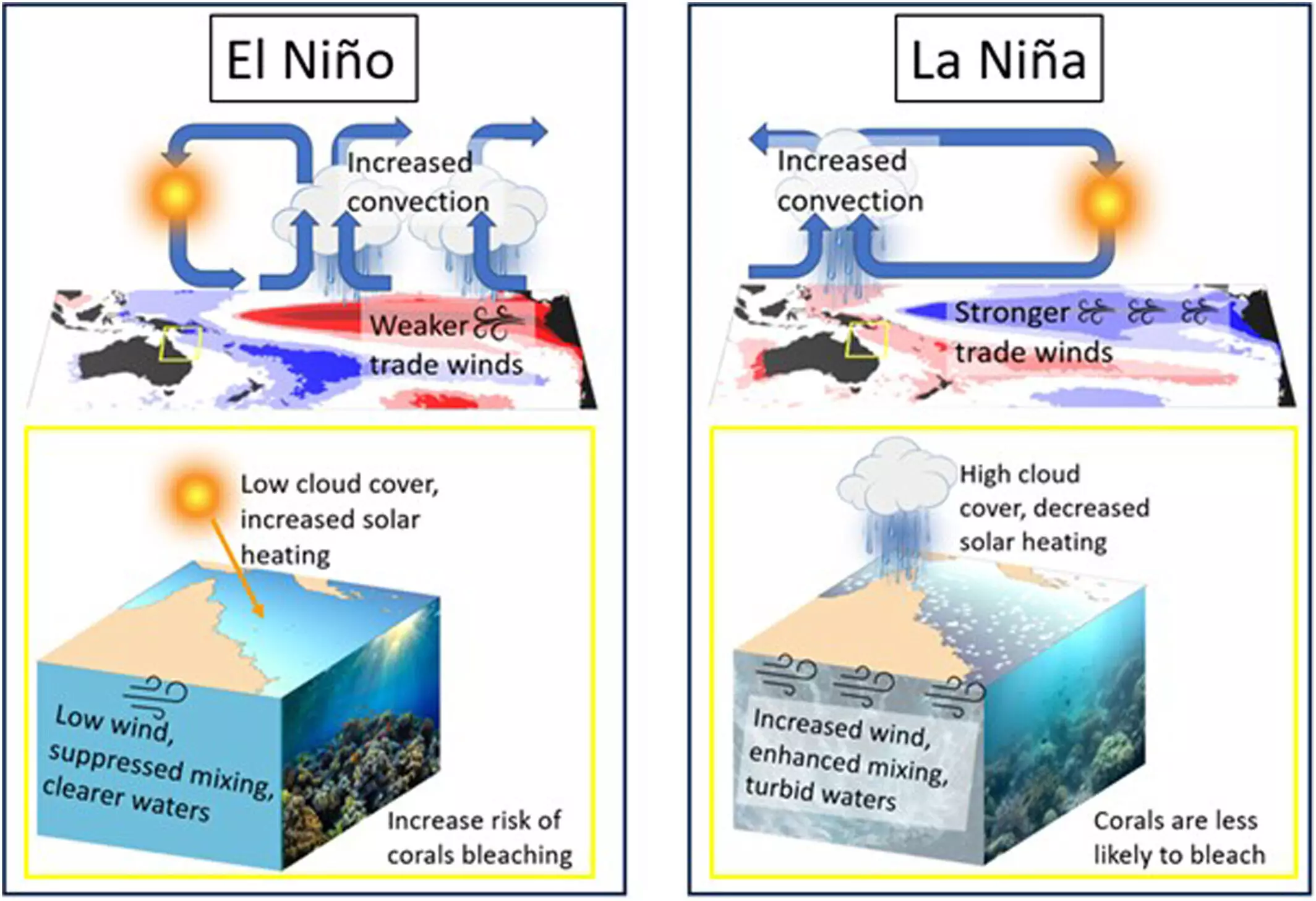A recent study conducted by the Institute for Marine and Antarctic Studies and the ARC Center of Excellence for Climate Extremes, led by UNSW Sydney, has shed light on the significant role of the Madden-Julian Oscillation (MJO) and El Niño Southern Oscillation (ENSO) in shaping extreme warming patterns and coral bleaching risk in the Great Barrier Reef (GBR). The GBR, known for its vast biodiversity, cultural importance, and economic value, faces increasing threats from rising ocean temperatures due to climate change.
Coral reefs in the GBR are highly sensitive to weather conditions. Calm, sunny weather tends to increase ocean temperatures, putting corals at risk of bleaching. On the other hand, stormy, rainy weather can have a cooling effect on the ocean, providing some protection to the corals. This is because sunlight penetration into the water heats up the ocean’s surface during sunny days, while cloud cover and wind during storms promote the mixing of cooler deep waters with warmer surface waters.
The study revealed that while ENSO, which involves changes in the temperature of waters in the central and eastern tropical Pacific Ocean, impacts weather patterns over the GBR on a seasonal scale, the MJO, a major fluctuation in tropical weather on weekly to monthly timescales, can alter these patterns on shorter, sub-seasonal timescales. These fluctuations lead to unexpected impacts on ocean temperatures and coral health in the GBR.
Catherine Gregory, the lead author of the study, emphasized the significant influence of the MJO on weather variability over the GBR, affecting the expected states of El Niño and La Niña periods. She highlighted the need to consider multiple drivers beyond ENSO to understand the causes of extreme warming and coral bleaching events. By understanding how ENSO and MJO influence weather patterns, researchers can better anticipate and manage coral bleaching events in the GBR.
Gregory noted that while El Niño periods are often associated with higher ocean temperatures and increased coral bleaching risk, and La Niña periods with cooler conditions, her research did not find a strong connection between the ENSO index and ocean temperatures in the GBR. This led her to explore other influential drivers, such as the MJO, which plays a crucial role in sub-seasonal weather variability in the region.
The study underscores the importance of developing comprehensive forecasting models that take into account the impacts of both ENSO and MJO to improve predictions of coral bleaching events. As climate change continues to pose a significant threat to coral reefs, understanding these climatic drivers and their interactions is crucial for developing adaptive strategies to protect the future of the GBR.
The study highlights the complex interplay between climatic phenomena, weather patterns, and coral health in the GBR. By delving deeper into the influence of the MJO and ENSO on extreme warming events and coral bleaching, researchers can work towards better conservation and management strategies for this iconic marine ecosystem.


Leave a Reply